Seeing a sea turtle lumber onto a beach and lay its eggs is, undeniably, a spectacular experience.
For sea turtle researchers, it also means a lot of work.
I recently joined the Conservancy’s Kemit-Amon Lewis and his team of volunteer researchers at their sea turtle project on St. Croix.
A large part of what has made this project so successful has been careful monitoring and data collection, and a standardized process for each turtle that comes ashore to lay eggs.
Here’s what you could expect as a sea turtle researcher. And it’s for every turtle that lays eggs, from 7 p.m. to 3 a.m., five nights a week.
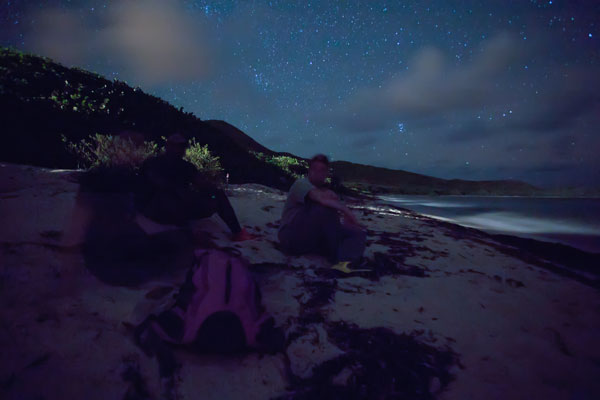
Part 1: The Waiting Game
As dusk settles over St. Croix, tourists head off the beaches and are starting to flock to seafood restaurants and bars. As a sea turtle researcher, though, your work “day” is just beginning.
It’s dark and you’re on the beach, waiting for turtles. You are assigned a stretch of sand, where you’ll document every green and hawksbill sea turtle that comes ashore.
During peak times, there will likely be several turtles coming ashore, and some already beginning to nest.
As they beginning showing up, you make a mental note of the turtles: a green sea turtle is digging, a hawksbill is heading into some bushes, two more are on the edge of the water.
You head to the green sea turtle digging its nest and set up sit nearby – using every precaution not to disturb the turtle. Red lights (the turtles aren’t bothered by red) and quiet are the order of the night.
The turtle digs for 45 minutes to an hour. Enjoy it: the calm before the storm. Time to make sure your GPS unit and flashlight are functioning, and perhaps to gaze at bioluminescence in the bay or stars overhead.
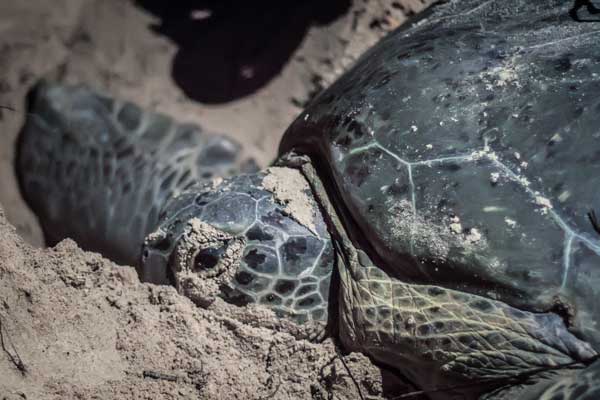
This particular turtle finds its nesting site unsuitable, and returns to the ocean. Time to find another nest.
Part 2: Measure for Measure
You’ll soon learn to assess where the turtle is in its nest digging process. The current one you’re watching is slowing down, and fluttering the sand in a way to camouflage what it’s doing.
It’s going to lay eggs.
The turtle enters a trance as it begins to lay eggs. In this state, it is not bothered by human presence.
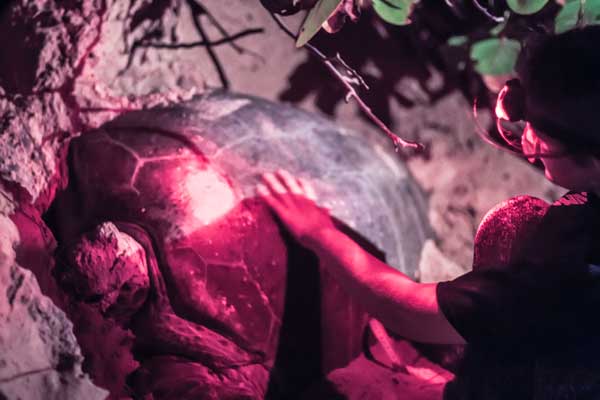
Now is the time to gather data. There’s no time to dawdle. Once the turtle lays its eggs, it will be fully alert and head back to sea.
Here’s your checklist:
First, check for an existing tag. If the turtle has been previously tagged, record the number.
If no tag, attach a tag to the edge of the flipper. The turtle will be then recorded every time it returns to the beach.
Do a careful check of the turtle’s condition. Is it healthy? Any abnormalities or signs of illness? Check carefully for shell damage, fouling from barnacles or algae, flipper injuries or tumors.
Measure carapace.
Finally, use triangulations methods to mark the location of the nest, and physically mark the location with a flag. The eggs will hatch in approximately 60 days.
Make sure you have recorded all the data, to be entered tomorrow afternoon back at the preserve.
Then look for the next turtle.
Repeat as necessary.
Part 3: Nest for Success
Sixty days later – yes, you’re still on the job – it will be time to return to those eggs you saw being laid.
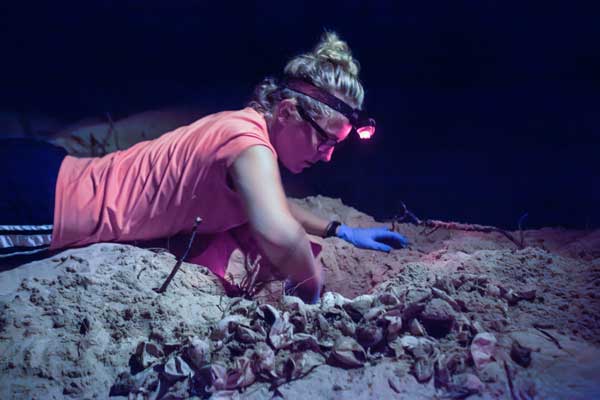
Perhaps you’ll be lucky and see dozens of baby turtles high-tailing it for the water.
More likely, you’ll see lots of curvy little tracks coming from the nest – a sure sign they hatched earlier that day.
Either way, it’s time for a new part of your work: excavating the nest.
As you dig, you almost immediately find a wiggly surprise: a baby sea turtle, slow to dig itself out of the nest.
You set that one free in the water to begin its perilous journey.
Now it’s time to dig, dig, dig. You’ll understand how difficult it is for a sea turtle to create a nest using only flippers.
Soon, you’ll find lots of the leathery remnants of hatched eggs. As you scrape sand, you pull each egg out. You count the number of successful hatches. Then you push the egg remnants back into the hole and bury them.
You pause for a moment, realizing you’ve witnessed a large part of the nesting process. A new generation of sea turtles is on its way into the dangerous seas. The lucky ones will return 15 to 30 years later to start their own nests.
But before you can get lost in the reverie, you see another dark form down the beach. And your walkie-talkie is crackling, with one of your colleagues asking for help with a hawksbill in some deep brush.
You look at your watch. It’s only eight at night. You have five more hours of sea turtles. And you wouldn’t have it any other way.
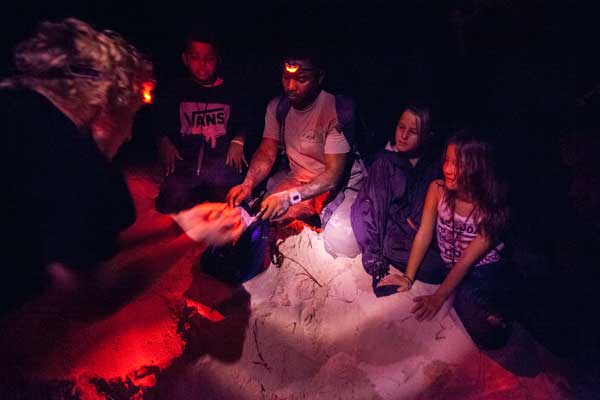
A special thanks to photographer Marjo Aho for accompanying this field trip and providing all images used in this blog.
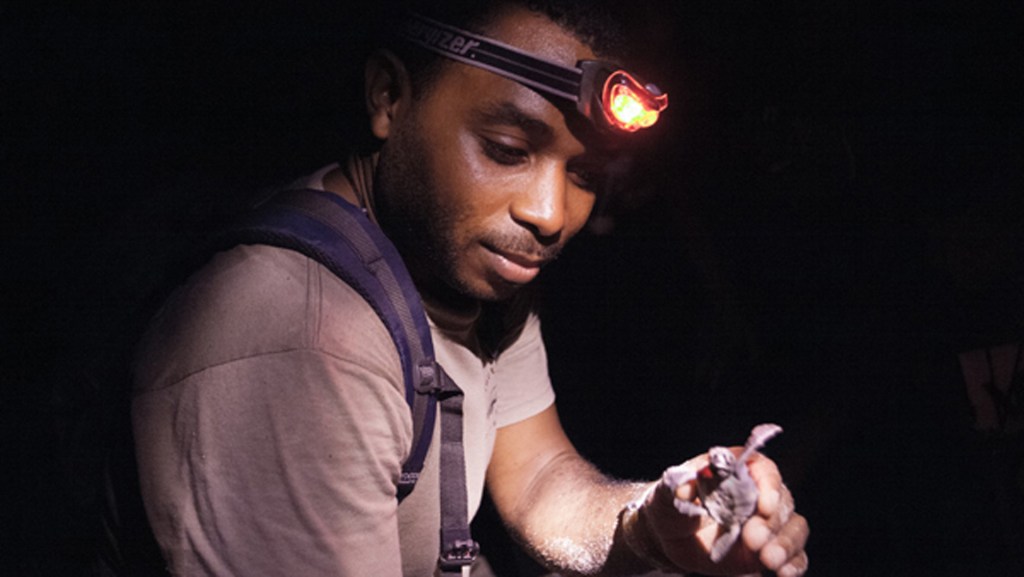



This is my dream job, I am currently studying zoology at Bangor University and cannot wait to hopefully crack my way into this part of conservation!